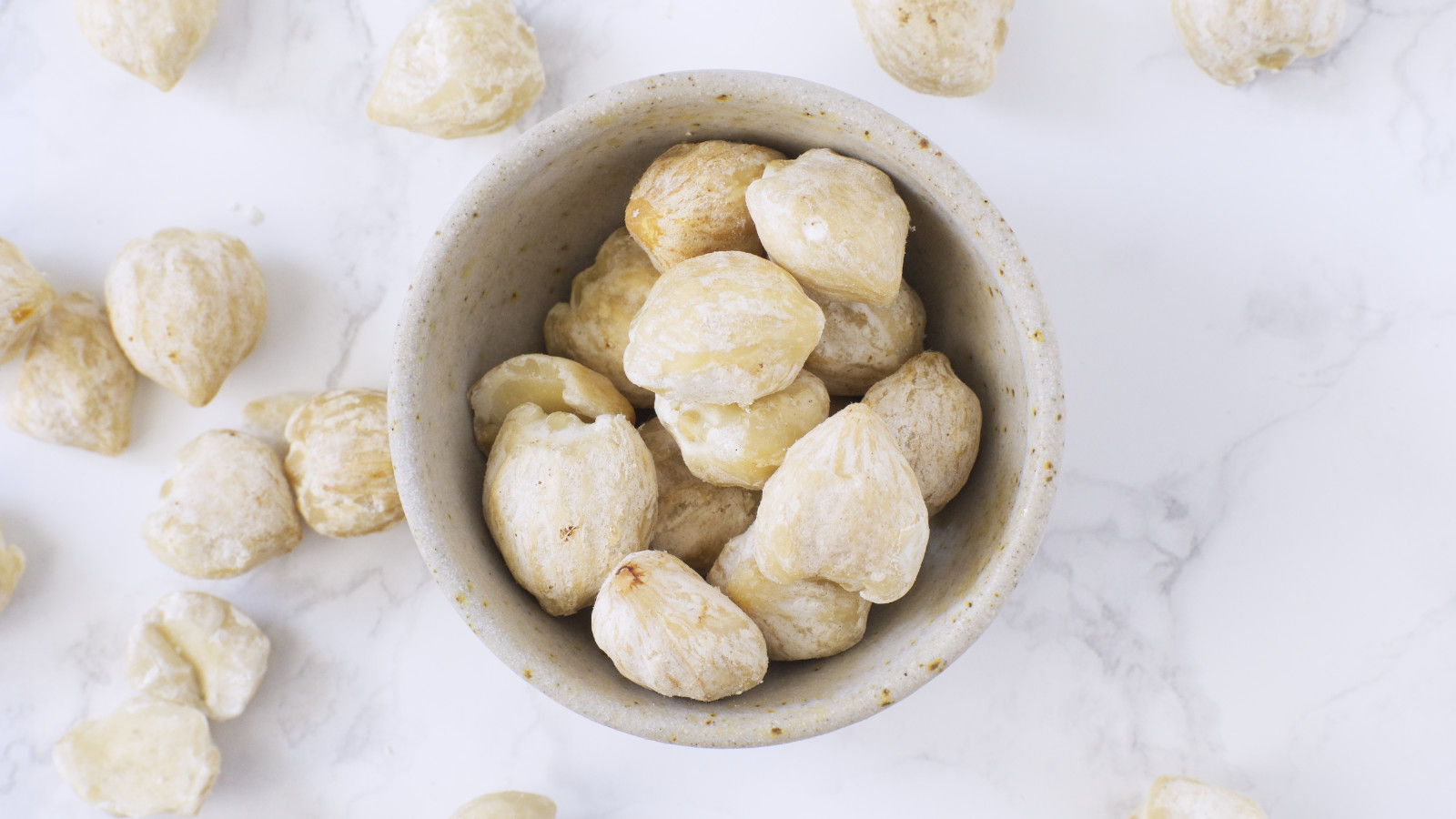Candlenuts are often used in curries or stew when it comes to Malaysian, Indonesian or even Singaporean cuisines. The high content of oil in candlenuts contributes to the gravy being thicker in curries and stews. Candlenuts are added into the chilli pastes of curries to make the dish thicker, creamier and slightly oilier. The presence of glutamic acid in candlenuts gives a dish the hint of nutty flavour. The mild bitterness in the candlenuts disappears upon cooking.
Fresh candlenut fruits (and seeds) are toxic and cause laxative effects and vomiting if ingested in quantity.
(Photo by Tatters)
Grown on huge trees, the fruit of candlenuts are left to decay in a moist environment to harvest its seeds. Candlenuts are seeds which had matured. One fresh candlenut fruit have one to two seeds.
(Photo by Tatters)
The name ‘candlenut’ is derived from the high content of inflammable oil in it. Upon cooking the candlenuts for at least 15 minutes at 121 Celsius, its toxic effect reduces just like its bitterness. They are also used as candles or even to light torches. Besides the South East Asian region, candlenut is also an important ingredient to the Hawaiian cuisine. Poké, a typical Hawaiian dish uses roasted crushed candlenuts as one of its seasoning. As the content of oil in candlenuts is high, it is said to contain the benefits like other oily nuts which are beneficial for the hair, skin and even to heal wounds.
Caution: The natural laxative effect in candlenuts supports the belief that candlenuts encourage weight loss. One should be very careful when using candlenuts for such purposes as several medical reports from countries like Argentina reported how women were hospitalized after consuming candlenuts. In Spain, the sale of candlenuts has been banned.
